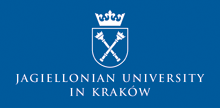Speaker
Description
Sm-activated scintillating glasses with high WO3 concentration up to 42.5 mol% were studied in this work. The effects of Sm2O3 concentration on the density, transmission and various (photo-, X-ray induced-, proton- and temperature dependent-) luminescence properties have been investigated. The glasses possess a high density that is more than 6.00 g/cm3. From the transmission spectra, glass samples show the several absorption peaks in visible light and near-infrared region, which confirm Sm3+ ion in glass matrices. Energy transfer from Gd3+ to Sm3+ takes place in the glasses which resulted to the strongest emission around 600 nm of Sm3+ (4G5/2→6H7/2) in the photo-, X-ray induced- and proton luminescence spectra. The optimum concentration of Sm2O3 for WO3-Gd2O3˗B2O3 glass is 1.0 mol% which performed the highest emission intensity in these three types of luminescence spectra. In 1.0 mol% doped glass, the decay time under pulse X-ray excitation was measured and found to be 0.29 ms. The temperature dependent luminescence in a range of 10 K – 300 K of 1.0 mol% doped glass was measured under uv-laser excitation. The emission intensity of glass increased 4 times from with decreasing of temperature. In this work, the fabricated WO3-Gd2O3˗B2O3 glasses doped with Sm2O3 show the strong visible luminescence under visible light, X-ray and proton excitation. This glasses perform a potential for applications in the high energy / nuclear physics, radiation monitoring and homeland security.

